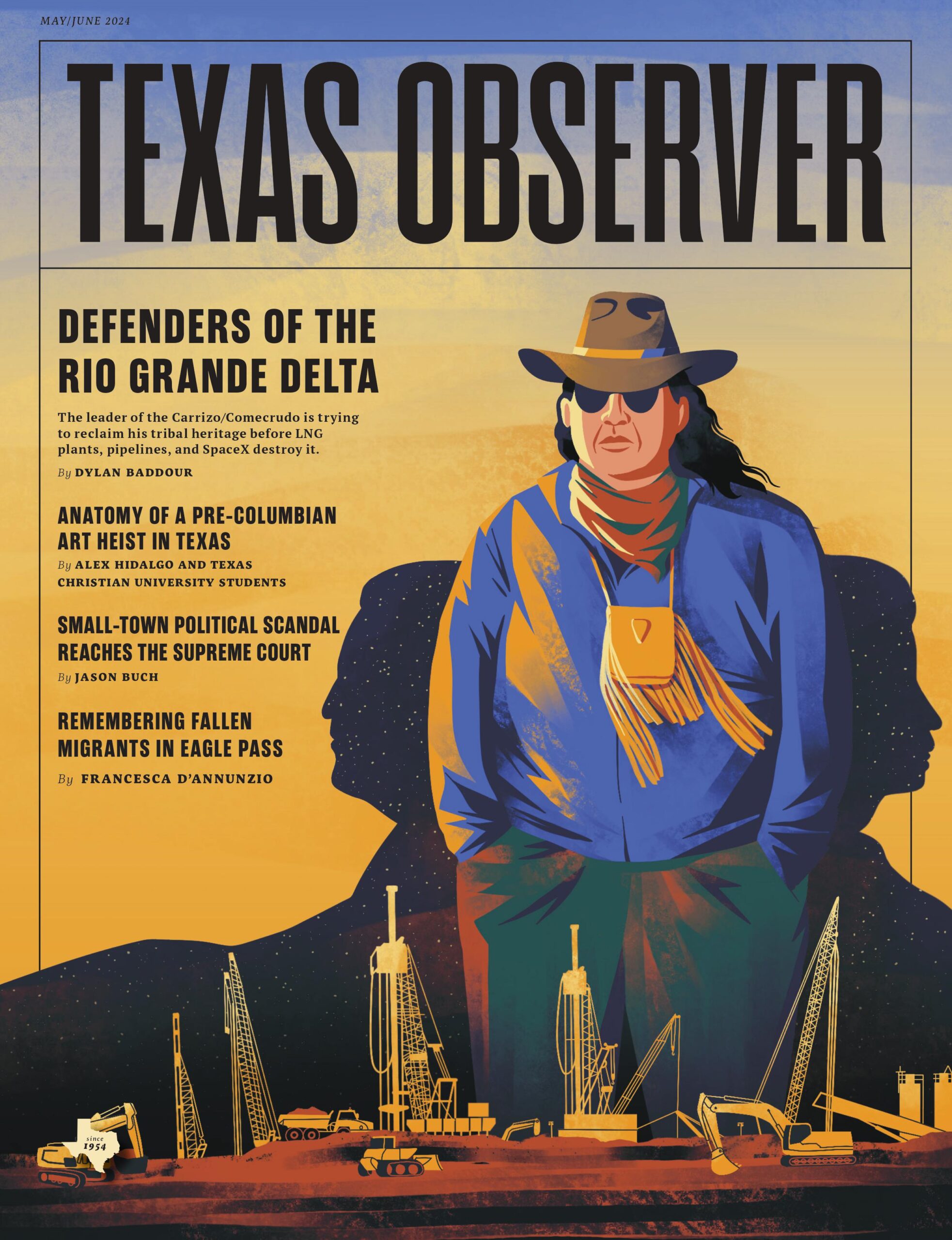ustxtxb_obs_1985_03_22_50_00025-00000_000.pdf
Page 13
BOOKS AND THE CULTURE FIFTEEN CHAPTERS into Distant Neighbors, Alan Riding devotes a paragraph to Mexican political novelist Luis Spota. I was somehow hoping that he would. Not because Spota, who died in January, never achieved the respect of the Mexican intellectual community, though his ten titles over the past fifteen years have made him the most widely read author in the country. Rather, because Spota, through his fiction, realized what Riding describes in his subtitle: A Portrait of the Mexicans. It is in his chapter on Mexican culture that Riding includes Spota, almost allowing him a place among the other Mexican writers who write “literature,” even suggesting that foreign diplomats read him as a “primer to understanding the system at work.” Maybe U.S. Ambassador John Gavin has read him. One can only hope. Like Spota’s work, Alan Riding’s portrait is vivid and all-inclusive. Perhaps more appropriately, it can be considered a mural. Everyone is represented. Anchoring the center is the PRI, the dominant political party that institutionalized a revolution. On the right, vigorous and growing is PAN, the conservative and Catholic Partido de Acci6n Nacional, at the moment under seige in the border city of Piedras Negras. On the left, a motley of quarreling acronyms so divided by personality and the minutiae of ideology that not even the foreign policy of Ronald Reagan Reeghan as they say can unite them. There are peasants petitioning for land their Revolution promised them 75 years ago, the Mexican Catholic Church searching for its soul, the bloated and corrupt government monopoly Petr6leos Mexicanos, every Mexican President since JuArez who corresponded with Lincoln and ancient labor leader Fidel VelAzquez, Frequent Observer contributor Louis Dubose is a freelance writer living in Austin. who some claim corresponded with Judrez. Clustered about and and peering from behind these, and others not here mentioned, are followers, acolytes, and ideologues. Riding, who recently left Mexico City after six years as New York Times DISTANT NEIGHBORS: A Portrait of the Mexicans By Alan Riding Alfred A. Knopf, New York, 1984, 385 pp., $18.95. bureau chief, begins with the obligatory study of the Mexican character. Here he looks to the authors who made this type of chapter obligatory: Samuel Ramos and Octavio Paz. An interesting and appropriate beginning: the sort of psycho-linguistic study that works so well as an examination of the Mexican soul. Then come two chapters following the standard division of Mexican history: pre-Cortesian Mexico to the Revolution and the Revolution to Modern Mexico. With his background in place, Riding moves fast to the subjects that make his work: the motors that move and shake Mexican society forces that keep the country together while they seem to work toward tearing it apart. Central among these is, of course, money. In so many words, Riding reminds those of us who would limit our reading to Ramos, Paz, Vasconcelos, and the rest, that psychology, poetry, and history don’t tell all. If we are to understand Mexico, we probably should begin with the financial section of whatever we read each day. Political machinations, corruption, stolen elections, ruminations of Mexico City literati, all the workaday news, will serve only to supplement what must be the heart of what we should know about this country. For Mexico, an hour of reckoning is at hand. Its terms are economic. MEXICO’S post-war economic model, as Riding sees it, has failed, limiting traditional options that have served to maintain political stability, which, in this country, is always a corollary of economic growth. The “stabilizing development” that started with President Miguel investment, promoted industry and agribusiness, and provided Mexico with economic growth sufficient to meet the marginal necessities of an exploding population and the avaricious demands of politicians and bureaucrats. Riding considers the twelve years under presidents Luis Echeverrra and Jose Lopez Portillo as a time when Mexico, through a series of imprudent decisions, forfeited its economic future. Looking at Echeverrra and Lopez Portillo, Riding sees neither statesmen nor economic managers. Each president amassed huge personal fortunes while they sold, or at least mortgaged, the soul of their country. By the late 1960s, when Mexico was caught between decreasing revenues and increasing demands for spending in health care, education, and food and transportation subsidies, the government might have increased taxes and looked to remedy several structural flaws in its economy. Echeverrra happened upon another solution, perhaps the only one that would allow him to preside over a sexenio of economic growth. When in May of 1973, the Finance Minister Hugh B. Maragin announced that the Treasury was empty he was abruptly fired, to the words: “I’ll name somebody who can find the money.” The new minister, Jose Lopez Portillo, found the money by borrowing abroad, and forty-two months later as President, he inherited the economic mess that his policy has produced. Between 1970 and 1976 the public sector’s share of foreign debt increased 450 percent to $19.6 billion \(a modest and private foreign debt doubled to $4.5 billion. Echeverrra signed off with an announcement that the peso would be devalued; it dropped immediately from twelve-and-a-half to 29 to the dollar. During his final three weeks in office, he declared emergency wage increases, expropriated private farms in Sonora, and tried to pressure President-elect Lopez Portillo to suspend all foreign currency trading until inauguration day. By the time Lopez Portillo took office, few options were left to him. Understanding the System By Louis Dubose THE TEXAS OBSERVER 25


